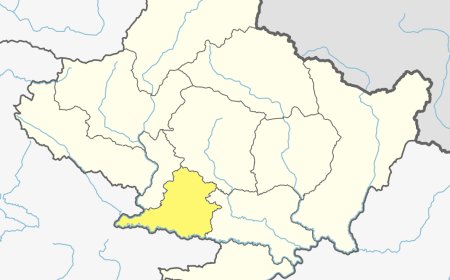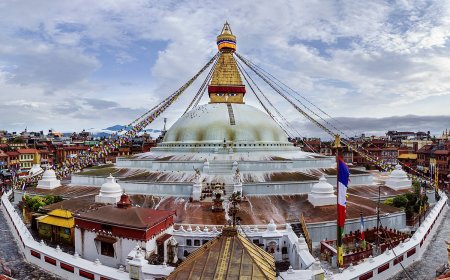Navigating the Future: Exploring the Implications of Kathmandu's Soaring Population
Exploring the future effects of Kathmandu's rising population. Examining the strain on infrastructure, housing shortages, environmental impact, and the implications for healthcare and education systems.
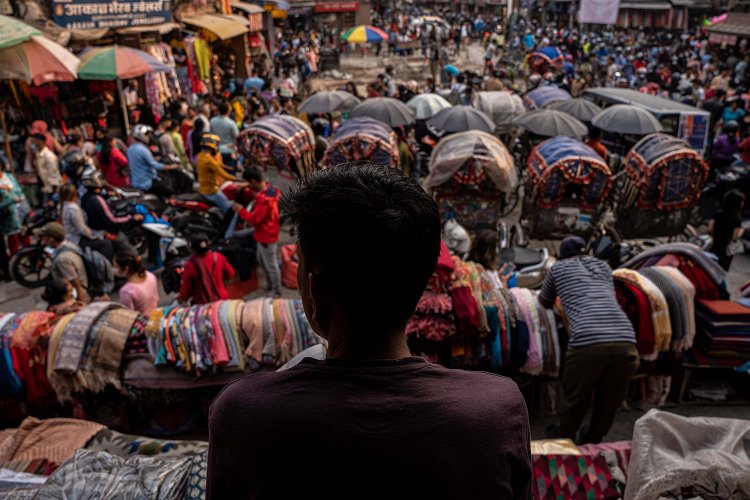
Kathmandu, the bustling capital city of Nepal, is undergoing a significant transformation as its population continues to grow at a rapid pace. This population surge is not just a temporary phenomenon but rather a trend that is anticipated to persist in the foreseeable future. As more people flock to Kathmandu in search of opportunities and a better life, it becomes imperative to delve into the potential effects of this population growth on various aspects of the city.
With the rising population, Kathmandu is facing the challenge of accommodating the needs of its residents. The city's infrastructure, including roads, transportation systems, water supply, and sewage facilities, will be strained to meet the demands of a larger population. Inadequate planning and development could lead to increased congestion, stretched public services, and a depletion of resources.
Moreover, the population growth in Kathmandu is likely to contribute to urban sprawl, resulting in the expansion of the city's boundaries. This expansion may encroach upon green spaces, agricultural land, and natural habitats, leading to a loss of environmental balance. Additionally, the increasing demand for affordable housing may exacerbate housing shortages, giving rise to informal settlements and housing inequalities.
The environmental impact of a growing population cannot be ignored. The surge in pollution levels, waste generation, and energy consumption will strain the city's ecosystem and natural resources. Air pollution, water contamination, and the degradation of the environment will have long-term repercussions on the overall well-being of the city and its inhabitants.
The various aspects that will be impacted which are explained briefly below:
-
Increased traffic congestion:
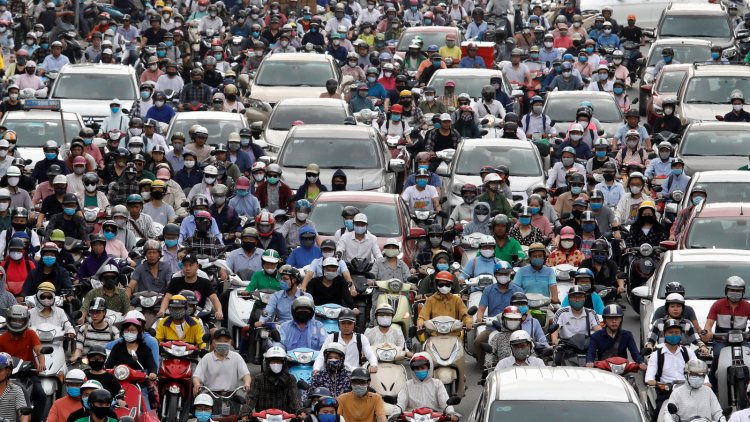
As the population in Kathmandu continues to rise, one of the prominent challenges faced by the city is increased traffic congestion. With more people residing in and commuting to the city, the existing road infrastructure struggles to accommodate the growing number of vehicles, leading to traffic gridlocks and longer travel times.
The surge in population translates to a higher demand for transportation, both private vehicles and public transportation. The road network, originally designed for a smaller population, becomes overwhelmed, especially during peak hours. The result is a significant increase in traffic congestion, with vehicles moving at a slower pace or coming to a standstill on major roads and intersections.
The consequences of increased traffic congestion are multi-fold. Firstly, it causes inconvenience and frustration among commuters who experience longer travel times and delays in reaching their destinations. This can have a negative impact on productivity and quality of life for residents and workers in the city.
Secondly, traffic congestion contributes to air pollution and environmental degradation. Vehicles stuck in traffic emit higher levels of pollutants, including carbon dioxide and other harmful gases. This not only poses health risks to the population but also contributes to the overall deterioration of air quality in Kathmandu.
Furthermore, traffic congestion leads to increased fuel consumption and wastage of resources. Vehicles stuck in traffic consume more fuel due to idling engines, resulting in higher fuel expenses for individuals and an increased demand for fossil fuels.
The economic implications of traffic congestion are also significant. Delays in transportation and longer travel times can negatively impact businesses, leading to decreased productivity and increased operational costs. Additionally, traffic congestion can deter potential investors and businesses from establishing themselves in the city.
-
Pollution:
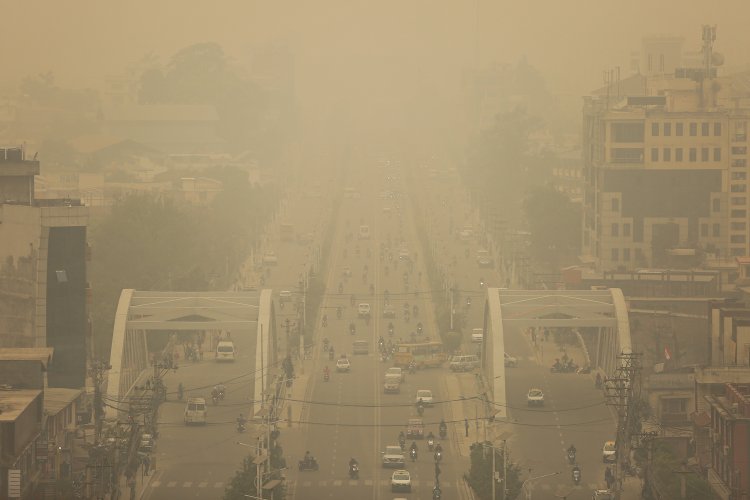 As Kathmandu's population continues to grow, pollution emerges as a significant concern for the city. The increasing number of vehicles, industrial activities, and waste generation contribute to various forms of pollution, posing risks to both the environment and public health.
As Kathmandu's population continues to grow, pollution emerges as a significant concern for the city. The increasing number of vehicles, industrial activities, and waste generation contribute to various forms of pollution, posing risks to both the environment and public health.
Air pollution is a pressing issue in Kathmandu. The rise in vehicular emissions, industrial activities, and the burning of solid fuels for cooking and heating result in high levels of particulate matter, nitrogen oxides, and other harmful gases in the air. Prolonged exposure to such pollutants can lead to respiratory problems, cardiovascular diseases, and other health issues.
Water pollution is another consequence of population growth. Insufficient waste management systems, improper disposal of industrial waste, and inadequate sanitation infrastructure contribute to the contamination of rivers, lakes, and groundwater sources. This pollution not only affects the availability of clean drinking water but also harms aquatic life and ecosystems.
The improper management of solid waste poses a significant challenge as well. With a growing population, the generation of solid waste increases exponentially. Inadequate waste collection, lack of recycling facilities, and improper disposal practices result in the accumulation of garbage, contributing to environmental degradation and health hazards.
To combat pollution, several measures can be implemented. The promotion of cleaner and more sustainable transportation options, such as electric vehicles and improved public transportation systems, can help reduce air pollution from vehicular emissions. Strengthening industrial regulations and implementing stricter emission standards can also mitigate pollution from industrial activities.
Investing in proper waste management infrastructure, including waste segregation, recycling facilities, and landfill management, is essential to address the issue of solid waste pollution. Additionally, raising awareness among the public about the importance of responsible waste disposal and recycling can significantly contribute to reducing pollution levels.
-
Overcrowding:
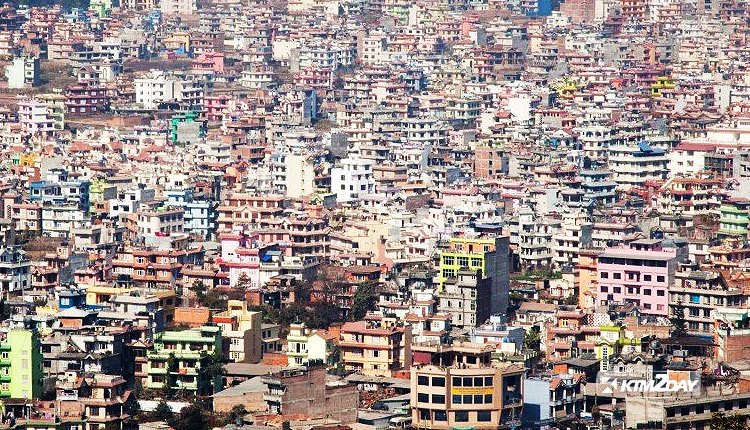
As the population in Kathmandu continues to surge, the issue of overcrowding becomes a prominent concern. The rapid influx of people into the city puts immense pressure on its infrastructure, housing, public services, and overall livability.
Overcrowding in residential areas leads to a shortage of housing units and increased demand for affordable accommodation. As a result, many residents are forced to live in cramped spaces or informal settlements with inadequate facilities and infrastructure. Overcrowded living conditions can lead to health and sanitation issues, as well as social and economic disparities among the population.
The strain on infrastructure is another consequence of overcrowding. Roads, public transportation systems, and utilities struggle to accommodate the increasing number of residents. Traffic congestion worsens, public services become overwhelmed, and the availability of resources such as water and electricity may become limited. The inadequate infrastructure cannot keep pace with the demands of a growing population, leading to a decline in the overall quality of life.
Overcrowding also impacts public spaces and amenities. Parks, recreational areas, and public facilities may become overcrowded and fail to meet the recreational and social needs of the residents. Schools and healthcare facilities may become overwhelmed, resulting in overcrowded classrooms and longer waiting times for medical services.
Additionally, overcrowding can have social and psychological implications. Increased competition for resources and opportunities can lead to heightened stress levels, social tensions, and a sense of dissatisfaction among the population. The sense of community and overall well-being may be affected as people struggle to find personal space and connect with others in a densely populated environment.
To address the challenges of overcrowding, comprehensive urban planning and sustainable development strategies are necessary. This includes the development of affordable housing options, improved infrastructure, and the provision of adequate public services. Urban expansion and the creation of satellite towns or suburbs can help alleviate the pressure on the city center. Implementing effective transportation systems, including mass transit, can also help reduce congestion and improve mobility.
Moreover, promoting sustainable population management, such as encouraging balanced regional development and providing incentives for decentralized growth, can help distribute the population more evenly and reduce overcrowding in specific areas.
-
Crime:
As the population in Kathmandu continues to increase, the issue of crime becomes a significant concern for the city. The rise in population can lead to various types of criminal activities, posing threats to public safety and security.
One of the primary factors contributing to crime in a growing population is socio-economic disparities. As the city expands, income inequalities may widen, creating pockets of poverty and marginalized communities. These socio-economic disparities can contribute to an increase in property crimes, theft, and petty offenses as individuals resort to illegal means to meet their basic needs.
Additionally, urbanization and rapid population growth can result in the formation of informal settlements and slums. These areas may face higher crime rates due to a lack of proper infrastructure, limited access to basic services, and limited law enforcement presence. The cramped living conditions and lack of community resources in these areas can foster an environment conducive to criminal activities.
As the city becomes more crowded, the strain on public services and infrastructure can also indirectly contribute to crime. Overburdened law enforcement agencies and stretched resources may lead to challenges in effectively addressing and preventing criminal activities. Limited surveillance systems, inadequate lighting in public areas, and insufficient community policing initiatives can create opportunities for criminals to operate without being easily detected.
Furthermore, the anonymity and transient nature of urban environments can facilitate certain types of crimes, such as fraud, cybercrime, and organized crime. The dense population provides criminals with a larger pool of potential victims and can make it easier for them to blend into the urban fabric.
-
Environmental degradation:
As the population in Kathmandu continues to grow, the issue of environmental degradation becomes increasingly significant. The rapid urbanization, increased industrial activities, and unsustainable practices have adverse effects on the environment, posing risks to ecosystems, biodiversity, and overall ecological balance.
One of the primary environmental concerns is air pollution. The rise in population leads to an increased number of vehicles, industrial emissions, and the burning of solid fuels for cooking and heating. These activities release harmful pollutants, including particulate matter, nitrogen oxides, and sulfur dioxide, into the atmosphere. Prolonged exposure to such pollutants can have detrimental effects on human health, causing respiratory problems, cardiovascular diseases, and other related illnesses.
Deforestation and habitat loss are also direct consequences of population growth. As more land is cleared for infrastructure development, housing, and agricultural purposes, natural habitats are destroyed, leading to the loss of biodiversity and disruption of ecosystems. This loss of green spaces can have far-reaching impacts on local flora and fauna, including endangered species, and can disrupt ecological balance.
Water pollution is another environmental challenge. Rapid urbanization and industrialization often lead to inadequate waste management systems, improper disposal of industrial waste, and insufficient sanitation infrastructure. As a result, pollutants find their way into rivers, lakes, and groundwater sources, contaminating water bodies and posing risks to aquatic life and human health. Limited access to clean drinking water further exacerbates the issue.
Soil degradation and improper waste management practices further contribute to environmental degradation. Improper disposal of solid waste leads to the accumulation of garbage, which can contaminate soil, groundwater, and surface water. The lack of recycling and waste segregation facilities exacerbates the problem, causing long-term environmental damage.
What's Your Reaction?

























































































